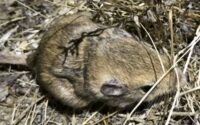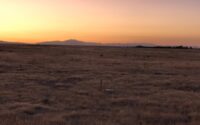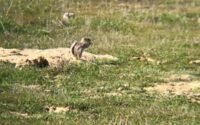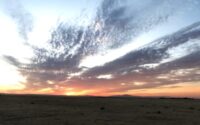


Area: 441 acres
Location: Kern County, California
Date Acquired: December 2018 (management only)
Acquisition Type: CNLM has a long-term agreement with landowner or third party.
Key Habitats: Annual Grassland
Species of Special Interest to CNLM: San Joaquin kit fox (Vulpes macrotis mutica), San Joaquin antelope squirrels (Ammospermophilus nelsoni), giant kangaroo rat (Dipodomys ingens), blunt-nosed leopard lizard (Gambelia sila), burrowing owl (Athene cunicularia), badger (Taxidea taxus), horned larks (Eremophila alpestris), loggerhead shrikes (Lanius ludovicianus), mountain plovers (Charadrius montanus)
Introduction
The Lost Hills Preserve (Preserve) is approximately 441 acres in size and is owned by CED Lost Hills Solar, LLC (CED). The Center for Natural Lands Management (CNLM) began managing the Preserve in December of 2018 through the terms set out in a Stewardship and Endowment Management Agreement. Under regulatory authority of the U.S. Fish and Wildlife Service and California Department of Fish and Wildlife, the Preserve was protected as mitigation for impacts to listed species (San Joaquin kit fox and San Joaquin antelope squirrel) as a result of a solar energy development project constructed and operated by CED.
In addition to CNLM’s management and protection of the Preserve’s conservation values, two conservation easements were granted to Sequoia Riverlands Trust in 2018: one over 206 acres (“Northern Conservation Lands”) and one over 235 acres (“Southern Conservation Lands”). CED is currently using approximately 160 acres of the Northern Conservation Lands as a solar photovoltaic energy generating facility and will continue to do so for the life of the project or for 40 years. At the time that the solar project is decommissioned, the project footprint will be restored to and then maintained as habitat for kit foxes and antelope squirrels. The Southern Conservation Lands consist of open space rangeland and are currently being managed by CNLM as habitat for the listed species found on site.
Conservation Significance
The conservation purpose of the Preserve is to protect and enhance habitat for San Joaquin kit fox (Vulpes macrotis mutica) and San Joaquin antelope squirrel (Ammospermophilus nelsoni). The endangered giant kangaroo rat (Dipodomys ingens) and blunt-nosed leopard lizard (Gambelia sila) have been found in the vicinity of the Preserve and may occupy this area. Other rare species include burrowing owl (Athene cunicularia), badgers (Taxidea taxus), horned larks (Eremophila alpestris), loggerhead shrikes (Lanius ludovicianus), and mountain plovers (Charadrius montanus).
The major vegetative association on the Preserve is annual grassland, although valley saltbush scrub may have been a significant component in the past. Wildfires occur periodically and have likely converted hundreds of acres of scrub to an open grassland type that is largely devoid of shrubs. Barren areas are interspersed throughout much of the Preserve and are characterized by bare ground with deposits of crusty or rocky soil. The site’s history of periodic wildfires, pipelines, and other ground disturbance, and the observation that remnants of valley saltbush scrub are found in the vicinity of the Preserve, indicate that the area likely supported at least some saltbush scrub in the past. Common grasses and flowering plants include peppergrass (Lepidium spp.), red brome (Bromus madritensis ssp. rubens), Arabian grass (Schismus arabicus), and tarweed (Holocarpha spp.). After a series of wet years, non-native grasses can become relatively dense and dominate the herbaceous vegetation.
Our Work
The overall goal for the Lost Hills Preserve is to maintain a functioning ecosystem that supports the threatened and endangered species previously described. CNLM strives to maintain current ecological conditions with abundant prey or forage species, and suitable vegetation composition and structure. CNLM’s management toolbox includes practices such as grazing, prescribed fire and mechanical or chemical exotic plant species control. Management is adaptive. If vegetation structure or other metrics suggest the area is becoming unsuitable for San Joaquin antelope squirrel or San Joaquin kit fox the Preserve Manager prescribes specific management treatments to improve conditions.
Monitoring activities at the Preserve encompass a suite of variables that are important to management activities. These include monitoring precipitation, key vegetative and abiotic factors, and the abundance of several threatened and endangered species. These monitoring activities are designed to provide long-term data on a suite of trophic levels thereby providing insight into the effectiveness of management techniques and better insight into how the system functions. Collecting these data over very long time periods will enable CNLM to observe and quantify episodic events and trends that would not be possible under shorter timeframes.
Public Access
Due to the vulnerability of the species and habitats that exist on this Preserve, it is not open to the public.
Contact
For information on Lost Hills Preserve or Center for Natural Lands Management please contact Bobby Kamansky, Preserve Manager at bkamansky@cnlm.org or 760.731.7790 extension 222.





